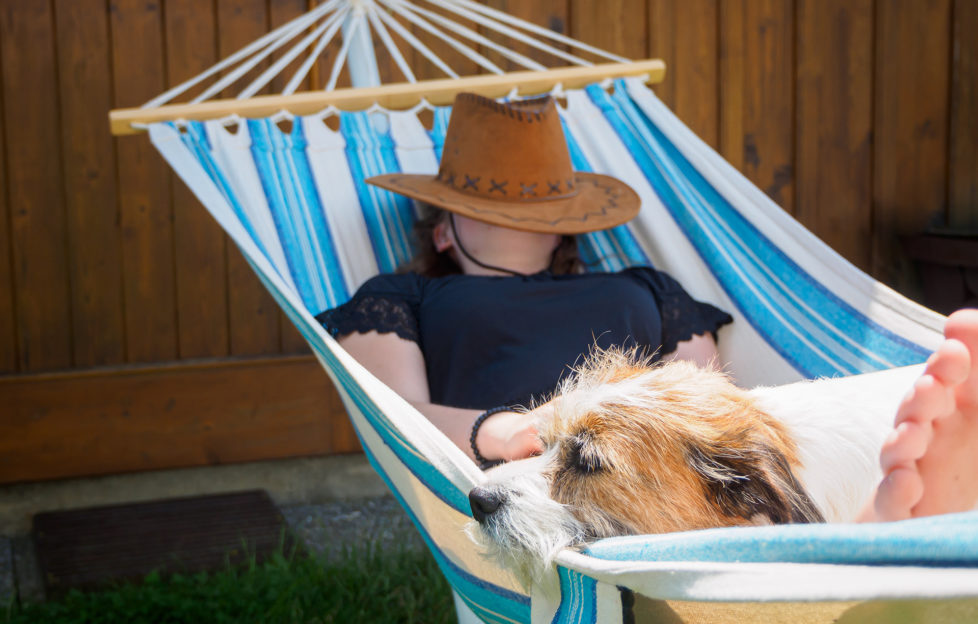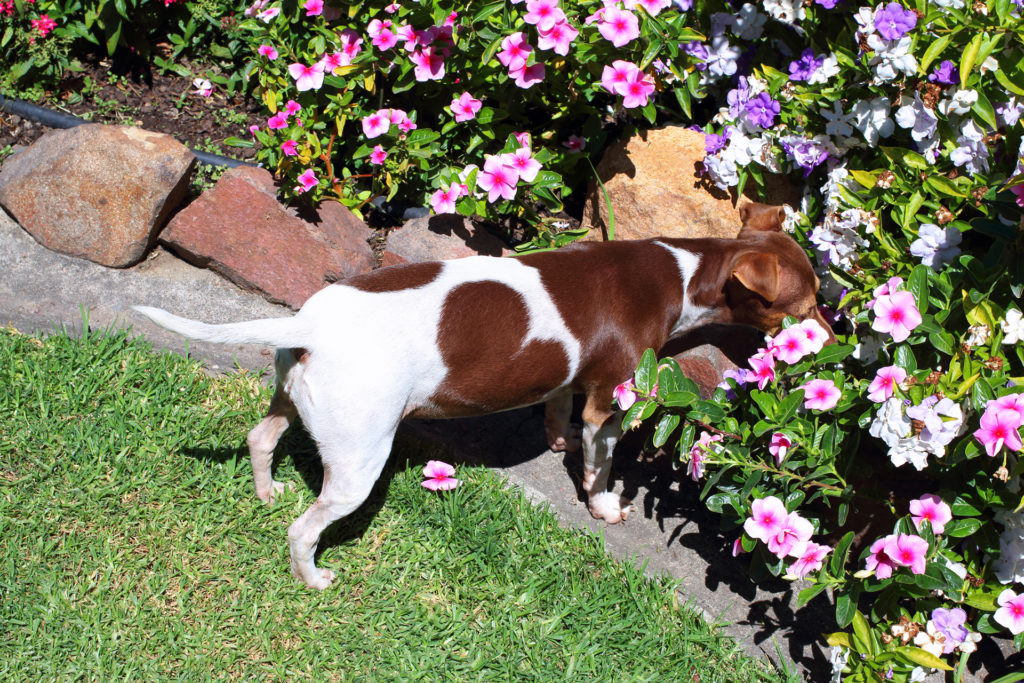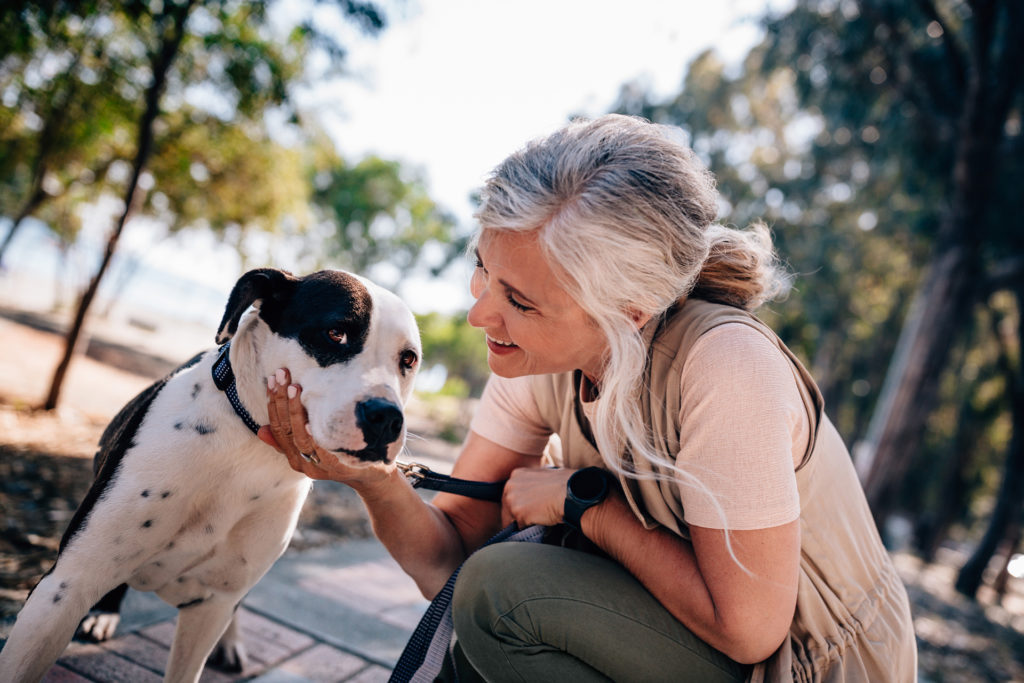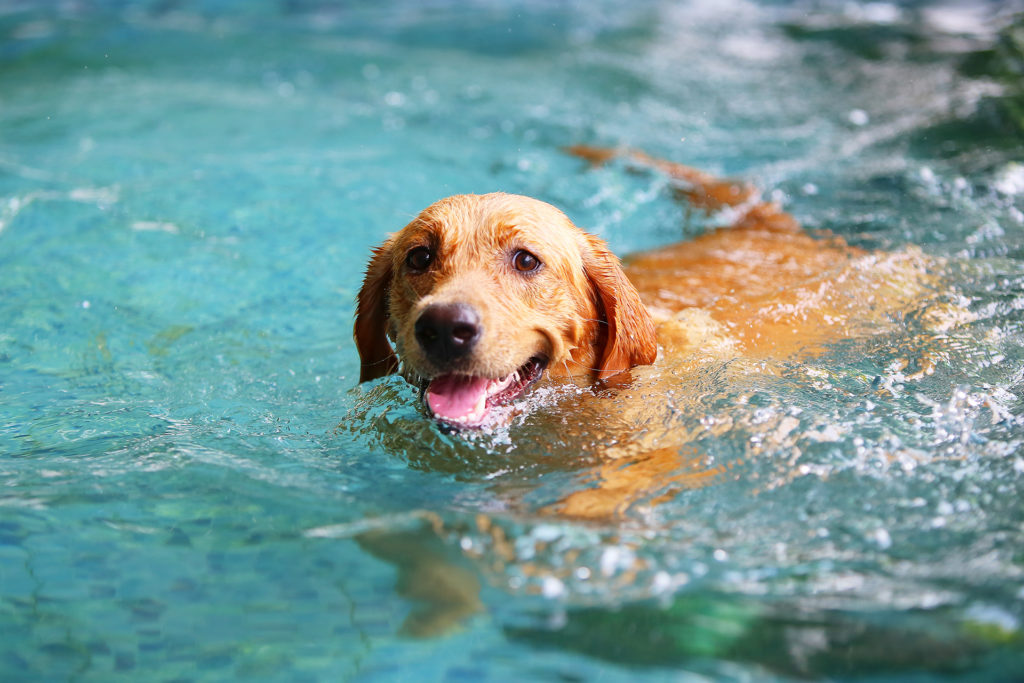Help Your Dog Stay Cool In A Heatwave

by Henry Dove, Veterinary Expert for Canagan
As temperatures rise, here are some every day pointers you can follow to keep your dog cool:
- Make certain they have access to clean water at all times
- Ensure they have access to shaded areas when playing outdoors
- Plan walks with your dog during cooler times of day, including early morning and late evening
- A paddling pool in your garden or a garden sprinkler would be a good investment for very warm days
A dog’s paw pads are sensitive and so can easily burn on hot pavements. As a general rule, if it is too hot for your hand, then it is too hot for them to walk on. Try holding your hand on the floor surface for a minimum of seven seconds to absolutely make sure before you head out together. Signs of burnt paw pads can include:
- Limping or refusal to walk
- Pads appear darker in colour
- Blisters or redness of the pads
- There are parts of the paw pad missing
- Most importantly of all at this time of year is to never leave your dog in a car – not even for a moment!
Heat Stroke – prevention and spotting the signs
Unlike humans, dogs barely sweat through their skin and so they rely on panting and releasing body heat through their paw pads and noses to regulate their body temperature and keep cool.
However, if diligent steps are not followed to keep your pet’s body temperature down, dogs can succumb to heatstroke very quickly. Symptoms of heatstroke in dogs can include:
- Glazed, glassy eyes
- Excessive dribbling
- Vomiting
- Lack of coordination
- Collapsing
If you suspect your pet is suffering from heatstroke you will need to conduct doggy first aid, working to slowly reduce their body temperature. This must be done gradually and by following these steps, otherwise you may risk them going into shock.
- Move your dog to a cool place – even better a place where there is a draft
- Encourage them to drink small, but frequent, amounts of cool water (not freezing water)
- Wet their coat with cool water (again, not with freezing water)
- If your dog has collapsed, you must call your vet immediately
Summer skin and coat essentials
Pale coloured dogs are more vulnerable to sunburn, particularly on their nose and ears, and if they are not well protected could lead to skin cancer. You can apply a non-toxic waterproof human sunblock or a specifically designed pet sunscreen.
Regular grooming is essential to rid of matts and tangles. If you don’t keep on top of these knots you run the risk of flies laying their eggs on your furry friend. Consider having your dog clipped shorter for the summer to help avoid this happening.
OUTDOOR EXERCISE IN THE SUMMER
DAILY WALKIES
If your dog is normally very active during their daily walks, playing fetch and running around, try and calm this down by encouraging to only walk and also by playing less energetic games.
OUR GARDENS
Before purchasing any pellets or domestic pesticides for your flower beds and lawns, read the labels carefully to make sure they are safe for your pet. We suggest always trying to go pesticide and poison free if you can, the hedgehogs and bees will thank you for it!
COUNTRYSIDE RAMBLES
The pesticides and treatments applied to some rural areas can affect the health of our animals, including dogs, because they contain active ingredients that are aimed at incapacitating or destroying parasites through attacking the nervous system.
When you return home from your ramble, it is wise to give your dog a good rinse.
If you are concerned your dog may have ingested any toxic outdoor chemicals, look for signs of lethargy, diarrhoea, vomiting, abdominal discomfort or joint stiffness and seek immediate advice from your vet if any of these are apparent in your pet.
SWIMMING
Swimming is excellent exercise for dogs. It is a great alternative to walking in the summer months and in keeping them cool.
Remember to be wary of tides at the beach and the currents in the river before you let your dog dive in.
Drinking too much salt water, or waters filled with multiple species of algae, could very well make your dog sick, so take plenty of fresh water in order to keep them hydrated and not inclined to drink from their surroundings.
Our expert, veterinarian Henry Dove, also warns of other hazards related to water:
“In warmer summer months toxins can build up in fresh/stagnant water that can cause serious health concerns for both you and your pet.
One of these organisms is blue-green algae, not all are toxic, but it is impossible to determine which is. These bacteria can build up in fresh water over dry summer months and form a film on the surface, giving the water a blue green appearance.
The toxins have various different effects on the body. Including vomiting, diarrhoea, respiratory disease, seizures and even death.
If the blue-green algae are seen in the water, then please prevent your dog from swimming and drinking the affected water. If they do, contact your vet immediately and rinse your dog off with fresh water.
Remember that this is rare but something to be aware of when your dog is enjoying a summer swim.”
Keeping on top of ticks and fleas
Warm weather is synonymous with peak flea and tick season so keeping your dog protected is more important than ever at this time of year.
Fleas don’t only just affect your dog, but they can take over the entire home. Spot treatments are most popular, but tablets and repellent collars are also available from pet stores and at your vet’s surgery.
Dogs are often exposed to ticks when walking through grassy areas and woodland. They are a particularly dangerous parasite that carry diseases. In the worst-case untreated ticks can lead to Lyme’s disease.
To safeguard your dog, it is recommended that you regularly use a preventative tick treatment. If you do happen to find a tick on your pet, use a tick hook to carefully remove the entire creature (including mouthparts and legs) so nothing is left under the skin. Should the tick be in a sensitive area, seek assistance from your vet for the removal.
Summer can be a great time to spend with your dog so it’s important to keep these tips in mind and always ensure they are comfortable.










